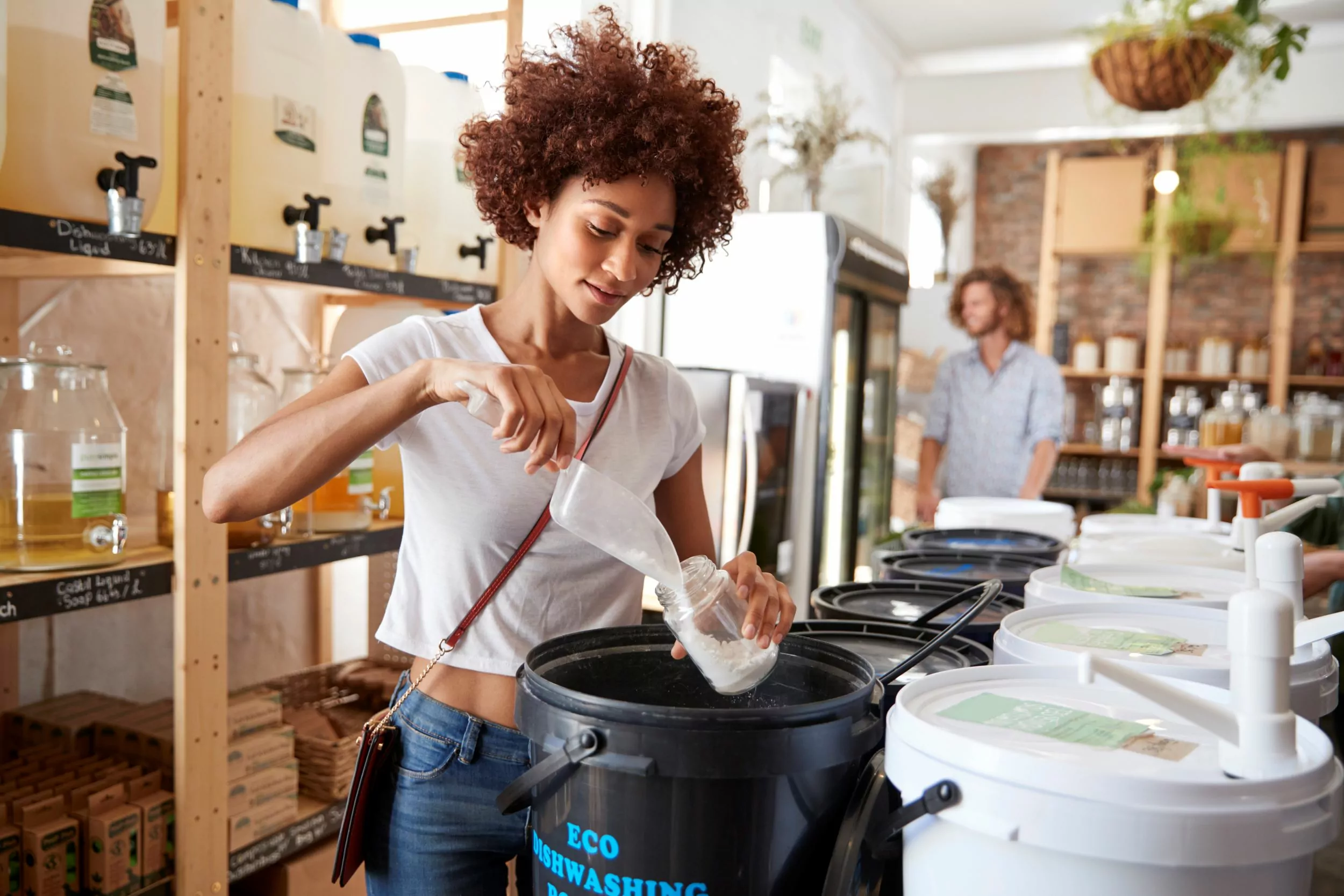The sustainability movement is receiving more and more attention from consumers and manufacturers alike. Consumers are increasingly seeking out environmentally friendly products, and appear to be willing to pay higher prices for them. However, developing an effective, appealing product (and packaging) that is better for the environment can be an expensive undertaking, and doesn’t guarantee that consumers will flock to it instead of to other brands’ offerings. Indeed, some manufacturers that have introduced new green products have not found the success they were hoping for. Is the importance of these types of products in the market overstated? How much demand is there really for the green cleaning products industry?
Are Green Cleaning Products Worth It?
A joint study from McKinsey and NielsenIQ, released earlier this year, set out to answer those questions. The study looked at five years of US consumer packaged goods (CPG) sales from 2017 to mid-2022, analyzing 600,000 products from 44,000 brands across 32 categories. And while not every single product or brand that made environmental, social, and governance (ESG) claims saw an increase in sales or revenue, the overall effect was clear: environmentally friendly brands performed better.
Over the past five years, CPG industry products that made ESG claims accounted for over half of market growth, averaging 28% growth over that period compared to 20% from products that didn’t make those types of claims. Some demographics showed higher interest in ESG products than others, such as households with children, higher-income households, and people living in urban and suburban areas. In general, however, purchasers came from a wide range of backgrounds, ages, incomes, and regions of the US, showing that there is no one particular demographic that values sustainability while others remain indifferent.
It’s important to note that while this study shows a corellation between ESG claims and sales growth, it does not conclusively prove that one causes the other. The data does not account for factors such as marketing, promotion, and distribution, which could all impact success. It also doesn’t distinguish between geniune sustainable practices and products which may be “greenwashing,” or making misleading claims about sustainability that aren’t supported by verifiable facts. Indeed, greenwashing can have the opposite of the intended effect by damaging consumer trust and brand reputation.
In the end, McKinsey and NielsenIQ have concluded that developing and selling sustainable products is “not just a moral imperative but also a solid business decision.” And this result is backed up by other studies as well. The NYU Stern Center for Sustainable Business and Circana has found that despite high inflation and other pressure on US consumers’ budgets, sustainable products are outperforming their competition and are growing at a significantly faster rate. While the price gap between products making ESG claims and more traditional offerings has narrowed, sustainable product prices are still more than 27% higher, so the fact that they are seeing such significant adoption in the market shows that consumers value them highly.
Going Green on an Industrial Scale
Commercial and industrial sectors are beginning to invest more in the green cleaning products industry as well. Not only can green cleaning products and practices appeal to customers and clients, they also have the potential to lower expenses without sacrificing efficiency.
Offerings from the green cleaning products industry are typically assumed to be less effective than traditional ones. People expect that the chemicals used in typical cleaning products and disinfectants are stronger than anything natural, and so cleaners that use fewer or no strong chemicals must not be as good at removing germs, dirt, and other substances. However, studies on various green alternatives have shown that these new product innovations can be at least as effective as their chemical counterparts.
Part of the reason for this is that some chemical ingredients in conventional cleaning products are used to add fragrance and don’t provide any actual cleaning or disinfecting functionality. These chemicals themselves can be toxic, and removing them has no impact on the effectiveness of the product. Aside from that, manufacturers have developed (and continue to develop) green cleaning products and methods that are powerful and effective despite the reduction or elimination of harmful chemicals.
Electrolyzed water, for example, is a strong and effective cleaner and disinfectant using little more than water and salt. Running an electric current through a mixture of those two substances produces hypochlorous acid (HOC1) and sodium hydroxide (NaOH). Both are harmless to humans, but HOC1 acts as a disinfectant at least 80 times stronger than bleach, while NaOH works as a multipurpose cleaner and degreaser.
There are more advantages to adopting green cleaning products beyond appealing to consumers and protecting the environment. Regular exposure to industrial-strength or even typical household cleaners can be harmful to humans in a variety of ways. Using products with fewer chemicals in them can protect the health of cleaning staff, and result in fewer absenses and less turnover.
Sustainability in the Green Cleaning Products Industry
Reducing chemicals is one way of making cleaning products more sustainable, but it isn’t the only way. Here are a few types of environmentally friendly offerings in the green cleaning products industry.
Eliminating plastics: Large amounts of plastic end up in landfills or oceans rather than recycling centers, taking up space and not decomposing. They can also leach microplastics into the environment, which find their way into the bodies of both animals and humans. Changing out plastic for other materials in product packaging or reducing the amount of packaging used for a product can therefore make a significant impact on the environment.
Refillable products: One way of cutting down on plastic packaging is by making and using products that can be easily refilled, and offering refills that use less packaging and plastic than single-use products. This is also an opportunity to offer subscription services for refills, which can provide a predictable stream of revenue.
Concentrates: Concentrated products can save on both packaging and transportation costs. Consumers buy a small package of concentrate and mix it with water to create a much larger volume of cleaning solution. This reduces the packaging needed to contain the product, as well as the size and weight of the item, meaning that it requires less space and fuel to transport, saving both money and energy.
Natural ingredients: Products that are composed mostly or entirely of natural ingredients can be better for both the environment and for people’s health. “Natural” cleaning products don’t have to mean products that are completely free of chemicals, either — only that natural ingredients make up the bulk of the product. By reducing the amount of artificial chemicals used in a cleaning product, health risks are significantly reduced as well.



